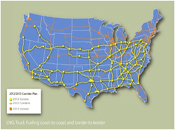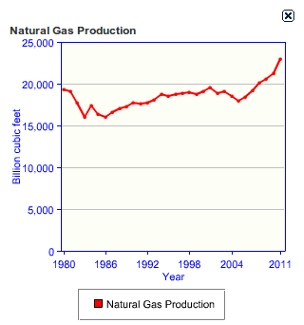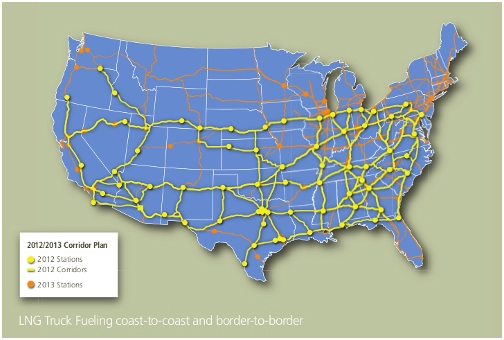
Since you first heard about the natural gas boom in North America—whether when we started telling you about it in 2006, or just recently, when the mainstream media began to catch on—you've probably been wondering when some of that good ol' American fuel would be available for your car's tank. . .
This spring, prices hit a one-year low: Natural gas fell below $2 to ~$1.80 per million British thermal units (MMBtu).
Today natural gas prices are still low, hovering just below $4 around $3.35 per MMBtu this week.
Meanwhile, gasoline prices averaged $3.34 per gallon (gal) this week.
Before we go any further, let me explain why $3.34/gal is much more expensive than $3.35/MMBtu. . .
As my colleague Nick Hodge told you on Wednesday, even if natural gas prices actually hit $4, you'd be paying $2.75/gal of gasoline equivalent to fill your tank with natural gas.
We all know the national average price of gasoline doesn't translate to what we pay at the pumps. Those of us living on the costs know it averages closer to $3.50. And I'm sure our readers in California recall when, not too many months ago, a single gallon ran you $5. . .
You were probably thinking you should skip the gas station and drive straight to a dealership to trade your car in for a new natural gas-powered car.
Heck, maybe you tried to—and if you did, you realized why this solution isn't as simple as it sounds.
Before the last decade, really, it wasn't feasible to fill up your tank with natural gas. . .
As recently as 2004, gasoline had been under $2/gal—and at the time, natural gas production was actually declining:

Obviously, this scenario has since shifted: Production is up and gasoline prices are way up.
This is really the first time the United States could benefit from using natural gas as transportation fuel.
The only natural gas-fueled passenger vehicle available this year was the Honda Civic Natural Gas, which runs on CNG, or compressed natural gas.
With a sticker price of $26,205, it has a decent fuel economy (27 mpg city, 38 mpg highway). And if you purchase one of these vehicles between now and Jan. 2, you get a $3,000 fuel card that can be used at Clean Energy (CLNE:NASDAQ) stations.
There's only one problem: Your nearest Clean Energy station might be hard to find. . .
Here in Baltimore, for example, the closest station is at the Baltimore-Washington International Airport. The next closest stations are in Richmond, Virginia, or New Jersey. (See if there's one near you here).
The necessary infrastructure for this transition from fuel to natural gas is severely lacking.
Fueled By Clean Energy
Now, that's not to say this infrastructure won't be developed. . .
Clean Energy Fuels Corp. is developing a program called America's Natural Gas Highway, which will install LNG truck fueling stations at Pilot-Flying J truck stops all across major U.S. highways.
The network is designed particularly for natural gas-fueled fleets—where the natural gas vehicle trend is growing fastest. Major companies, city buses and taxis, garbage collectors and delivery trucks are making the switch to natural gas-powered vehicles for their fleets to replace diesel engines.
This map shows the networks involved in the America's Natural Gas Highway program (yellow dots represent 2012 stations and orange dots are stations planned for 2013):

The first 70 stations have already been completed in 33 states; an additional 80 will be up and running by the end of next year.
A bipartisan initiative led by the governors of Colorado and Oklahoma also aims to encourage states to purchase CNG-fueled vehicles for their fleets. Twenty-two states are involved in the project, and they'll soon be bidding on vehicles presented by major Detroit automakers to fit the requirements.
Of course, these are all efforts for state or trucking infrastructure. Passenger vehicles and fueling stations are still lagging in this area.
But the push has to start somewhere. . .
It began with the oil and gas companies, and now it's moving to state fleets.
Soon enough, there will be natural gas vehicles on every block.
And there's still time to tap in at the source. Because natural gas production isn't slowing down any time soon.
Good Investing,
Brianna Panzica
Energy and Capital

























































